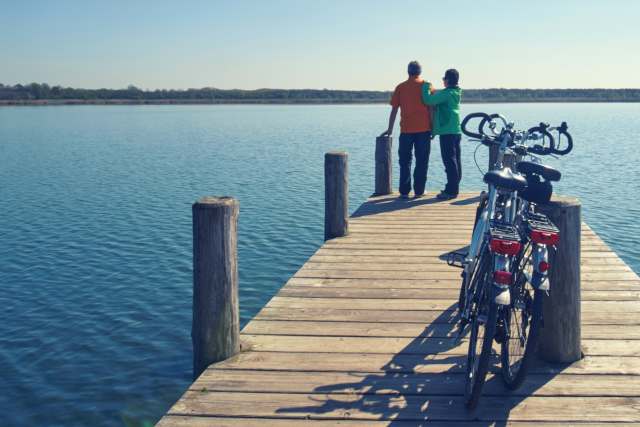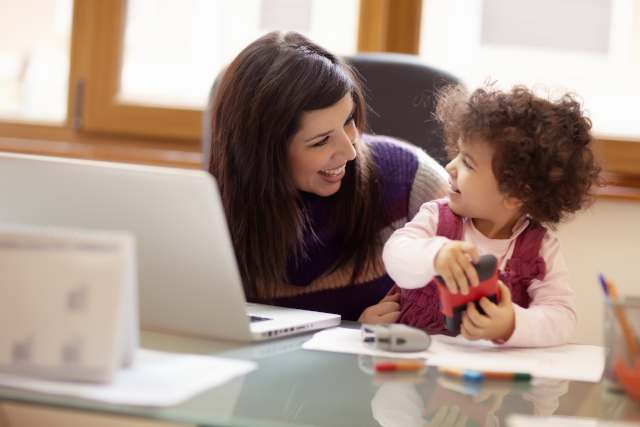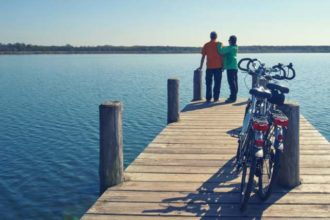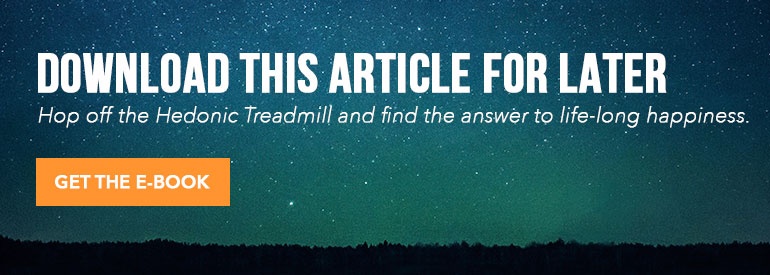 Reading Time: 8 minutes
Reading Time: 8 minutesSince the birth of my first son nearly fourteen years ago, I’ve been determined to concurrently excel in work, parenting, partnering, hobbies, and passion projects. And it took me nearly fourteen years to realize my desire to “have it all” had left me in a state of constant anxiety and stress that impacted me physically and emotionally. I wanted to change how I felt, and to do that, I realized I would have to first change how I thought — my expectations and my definition of a balanced life.
Once I committed to this journey, I became more aware of how many other people were struggling. My friends and colleagues often discussed and lamented the lack of balance in their lives. But whenever I participated in these discussions I felt like an outsider; not because I wasn’t also struggling to achieve balance, but because my struggles didn’t feel the same as theirs.
The more I observed, the more I realized that each person’s struggles were unique. And while all of us were primed and eager to bemoan the lack of balance in our lives, none of us had a methodology to define balance or to develop habits to achieve balance.
This reinforced my desire to understand, define, and realize balance in my life. Through research and reflection, I’ve learned how to develop behaviors and habits that allow me to achieve balance. I’m going to share with you what I learned and how you can also build a daily practice that will help you to reset your expectations, redefine your priorities, and establish more balance in your life.

How I Began: Understanding Balance
To shape my understanding of balance, I distributed a brief survey, “Defining Balance in Your Life,” to my personal and professional networks. I received valuable feedback and insights from the nearly fifty participants.
Of those respondents, over half were not satisfied with their work-life balance and actively seeking to find balance. Nearly 80% reported that family and friends were the most important aspects of their lives, and 18% “don’t think [balance is] possible to achieve.” I realized that, like me, many people were looking to achieve balance and didn’t necessarily know how.
This data is certainly interesting, but it wasn’t until I asked my survey participants, “What does work-life balance look like to you?” that I discovered an actionable way to conceptualize balance through three facets:
- Balance is relative. While there’s a seemingly endless stream of articles offering “10 tips to find balance in your life” or touting “the 5 secrets to having it all,” the reality is there isn’t one program or product that will bring contentment in work and personal life for everyone. There’s no one-size-fits-all state of balance. For every person that sees balance as more time to see friends, there is someone else who prioritizes family first or more time to travel.
- Balance is evolving. Unlike finishing a marathon or receiving a promotion at work, balance isn’t binary. What feels balanced to you today, may not feel the same tomorrow or a year from now. As one survey respondent suggested, balance “is like a game of Jenga; it’s always precarious.”
- Balance is dynamic. How you define balance will change over time; sometimes your scale will be different. Major life events may tip your balance and require you to reset your definition.
As I read through the responses to this question, I also noticed that my survey respondents used two different frameworks to define balance – actions versus feelings. About half defined balanced by their activities and accomplishments, and the other half by how they wanted to feel. The “feelers” generally had more positive comments and reported more optimism about their ability to achieve balance than the “doers.”
This discovery lead me to the epiphany that I was a doer. I’d defined balance in my life by checking accomplishments off a list — having a specific job, volunteering at my sons’ schools, or running a race. Yet, even when I achieved these accomplishments, I didn’t always feel good. More often, these actions left me feeling dissatisfied.
I wanted this to change, so I decided to learn to become a “feeler” and redefine balance for my life.

Defining (or Redefining) Your Balance
Before I could redefine my balance, I had to identify my current definition. I was focused on demonstrating to my children, their teachers, and other parents that I was a good mother who attended expected events and volunteered in the expected ways, while maintaining a demanding full-time job and trying to pursue my own hobbies. I regularly ran mental calculations on the time I should be allotting to each major aspect of my life, as though it were an easily solvable mathematical equation. I was constantly pushing myself; and I was exhausted and miserable.
I wrote down everything I’d identified as comprising my current definition of balance and circled only the things that I felt good about. I then shifted my focus from the “things” I had circled to the emotions that they elicited from me. I focused on those emotions and redefined my definition of balance in those terms:
- Love freely expressed by my sons and husband
- Pride and respect at work from my contributions, influence, and reputation
- Enjoyment of meals and my home
- Eagerness to engage in a few volunteer and passion projects
- Happiness during time spent with friends.
Are you a feeler or a doer? The most challenging part of this process is identifying how you currently define balance and admitting how each of the components that comprise that definition make you feel. Focus on what makes you feel good, and revise how you think about those components, from the action (spending time with my children) to the emotion (joy and appreciation of my children).
This process will help you to position and prioritize your activities within the context of how you want to feel. The next step is changing your behaviors to form new habits that enable you to realize your definition of balance.
How to Realize Balance in Your Life Through Daily Practice
To move from defining my balance to feeling it daily, I leveraged the habits practice that I learned from the Whole Life Challenge. I incorporated intentional practices into my life in 10-minute daily increments to create new habits that aligned with how I wanted to feel.
These are the steps I took to change my behaviors, form new habits, and realize balance:
- Focus on one area at a time – I was devoting most of my time outside of work on activities that either directly or tangentially supported my children; I wanted to instead prioritize my relationship with them.
- Document the current dimensions of that area – some of those activities included volunteering for the PTA Board; transporting my children to multiple sports and extracurricular activities; and seeking out social opportunities for them. I focused on how each of these made me feel and discovered the most anxiety was attached to volunteering.
- Devote time to one dimension, daily – I set aside 10 minutes each day to work on this project, first reviewing each of my volunteer commitments and analyzing how they made me feel. I felt excitement about only one of them — being the Race Director for a school 5km fundraiser — so I stepped away from the PTA.
- Continue the process, from one area of focus to the next. Continue the practice of reflecting on how you feel about each dimension — does it bring you closer to your definition of balance? If not, then it’s not important enough to continue developing as a habit; like I did with the PTA, give yourself permission to adjust or stop your focus on it.
- Double-down on found time: As you align your activities with your emotions, you’ll start to discover more time available to you each day to focus on areas you’ve identified bring you balance. A few months after beginning this process, I’ve found myself with 30-60 minutes of unscheduled time every day. I’ve been able to use this “free time” to work on a passion project — my website — which I’d been thinking about for years but never had the time to begin.
By rebalancing my priorities to focus on my relationship with my children, I’ve been able to wholeheartedly commit to taking my younger son for bikes rides and to collaborating with my older son on a family blog he wants to start. I can give them my full attention more often, and they reciprocate by talking more freely and engaging in more conversations. It’s easier for me to focus on them, and I feel happier when I’m around them.

How you get started on these five steps may look different than the path I took, but remember that the point of this journey, the destination so to speak, is to reset your expectations and ultimately, to change how you feel.
Ultimately, Balance Is Personal
Remember that your priorities are based on your values. To achieve a state of balance you must begin by defining your balance.
I’ve learned that because each person’s definition of balance is unique, there’s no productive value in comparing ourselves to others. Focus on your goals; set an intention for how you want to feel, and begin making small, incremental changes in your current behaviors.
Over time, these small changes will accumulate into powerful habits, and you’ll feel the positive benefits of realizing balance in your life.










